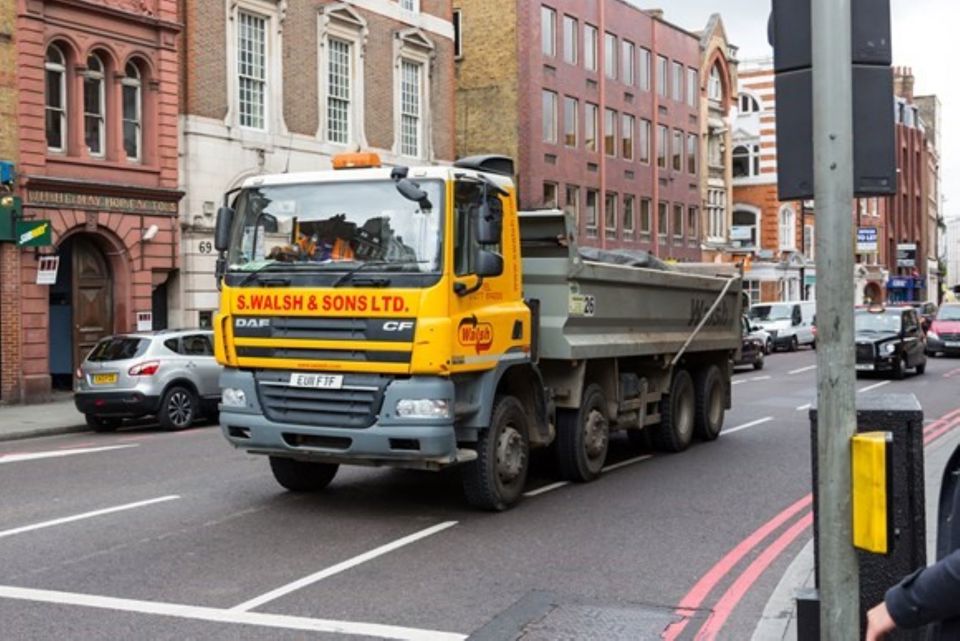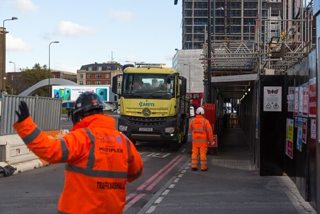One year on from the introduction of the Direct Vision Standard (DVS), new data from Transport for London (TfL) shows serious injuries are down by 64% compared to 2017.
TfL's DVS scheme requires owners of Heavy Good Vehicles (HGVs) weighing more than 12 tonnes to apply for a free safety permit that assigns vehicles a star rating based on how much the driver can see directly through their cab windows in order to be able to drive in London.
The scheme operates 24 hours a day, seven days a week and covers all roads in London.
The standards are set to tighten further in 2024.
In the first year of enforcement of DVS, 191,769 safety permits have been issued, including nearly 5,000 to 5-star vehicles, which provide the highest levels of direct vision.
More than 112,000 0-star HGVs have now had safe systems fitted.
The scheme’s average daily compliance is also very high, with more than 94% of HGVs in London now operating with a Safety Permit and hauliers reporting that they are building DVS requirements into future purchasing decisions.
Christina Calderato, TfL's director of transport strategy and policy, said: “In its first year of enforcement, our world-first Direct Vision Standard has helped to dramatically improve the safety of lorries and save lives.
“We are delighted that nearly 200,000 permits have been issued and want to thank all of the freight operators who have led the way in ensuring they only operate the safest lorries in London and across the UK.
“We also urge any freight operators who haven’t yet applied for a safety permit to do so and continue making our streets safer for the increasing number of Londoners who walk and cycle in our city.”
Introduced with the support of London councils, DVS forms part of TfL and the Mayor of London's Vision Zero plan to eliminate all deaths and serious injuries from London's streets by 2041.
HGVs accounted for just 3% of the overall miles driven in London from 2018-20, yet were involved in nearly half (41%) of fatal collisions involving people cycling and 19% involving people walking.
Collision severity involving HGVs has been falling, says TfL, indicating that interventions undertaken by both TfL and the freight industry in recent years are already making a positive impact.
The overall number of serious injuries involving HGVs has fallen from 48 in 2017 to 17 in 2021.
The first year of enforcement of the DVS and the HGV safety permit scheme has also seen a reduction in fatal collisions where vision is cited as a contributing factor.
In 2021, there were a total of 11 fatal collisions involving HGVs and people walking or cycling. Of these, six fatal collisions occurred where vision was cited as a contributing factor. This compared to eight in 2020 and nine in 2019 where vision was cited as a contributing factor.
The majority (four of the six) of fatal collisions in 2021 involved 0-star rated vehicles demonstrating the enhanced value of direct vision over other safe system equipment.
This is an area of focus for future phases of the scheme and TfL is aiming to introduce tighter standards from October 2024 when the minimum DVS star rating will be 3-stars.
All HGVs below 3-stars will need to feature a progressive safe system that will take into account new and emerging technology or safety equipment that was not available during the design of the current safe system. In anticipation of the tightened standards from October 2024, operators are already purchasing DVS compliant vehicles at 3-stars or above.
Will Norman, London’s walking and cycling commissioner, said: “It’s vital that all vehicles using London’s roads have safety at the forefront of their design. London’s world-leading Direct Vision Standard is helping to significantly improve lorry safety in the capital and forms a key part of our Vision Zero plan to eliminate all deaths and serious injuries from our streets by 2041.”
HGVs rated 1 to 5 stars received their free safety permit automatically upon application. The operators of 0-star lorries in London are required to fit a variety of safe system equipment including:
- High quality mirrors and side guards
- Cameras covering blind spots linked to an in-cab display
- An audible warning when turning left
- Motion sensors covering the sides of the HGV at low speeds
- A prominent warning on the back of their vehicle
Several freight operators including SUEZ Recycling and Recovery and FM Conway, alongside major projects such as Tideway, have led the way in introducing 5-star vehicles to London which provide high levels of direct vision and are the most effective at reducing tragic road deaths and serious injuries.
As a result of the efforts of many freight operators safer HGVs are now being used across the UK and beyond.
TfL is also working with the EU and other cities to mandate direct vision in vehicle design and safety regulations.
EU regulation 2019/2144, which comes into effect in 2022, requires all 27 members states to consider direct vision from HGV cab windows as a tool to reduce fatalities.
The European Commission expects that this, along with other safety measures being introduced, will save an estimated 25,000 lives by 2038.
























Login to comment
Comments
No comments have been made yet.